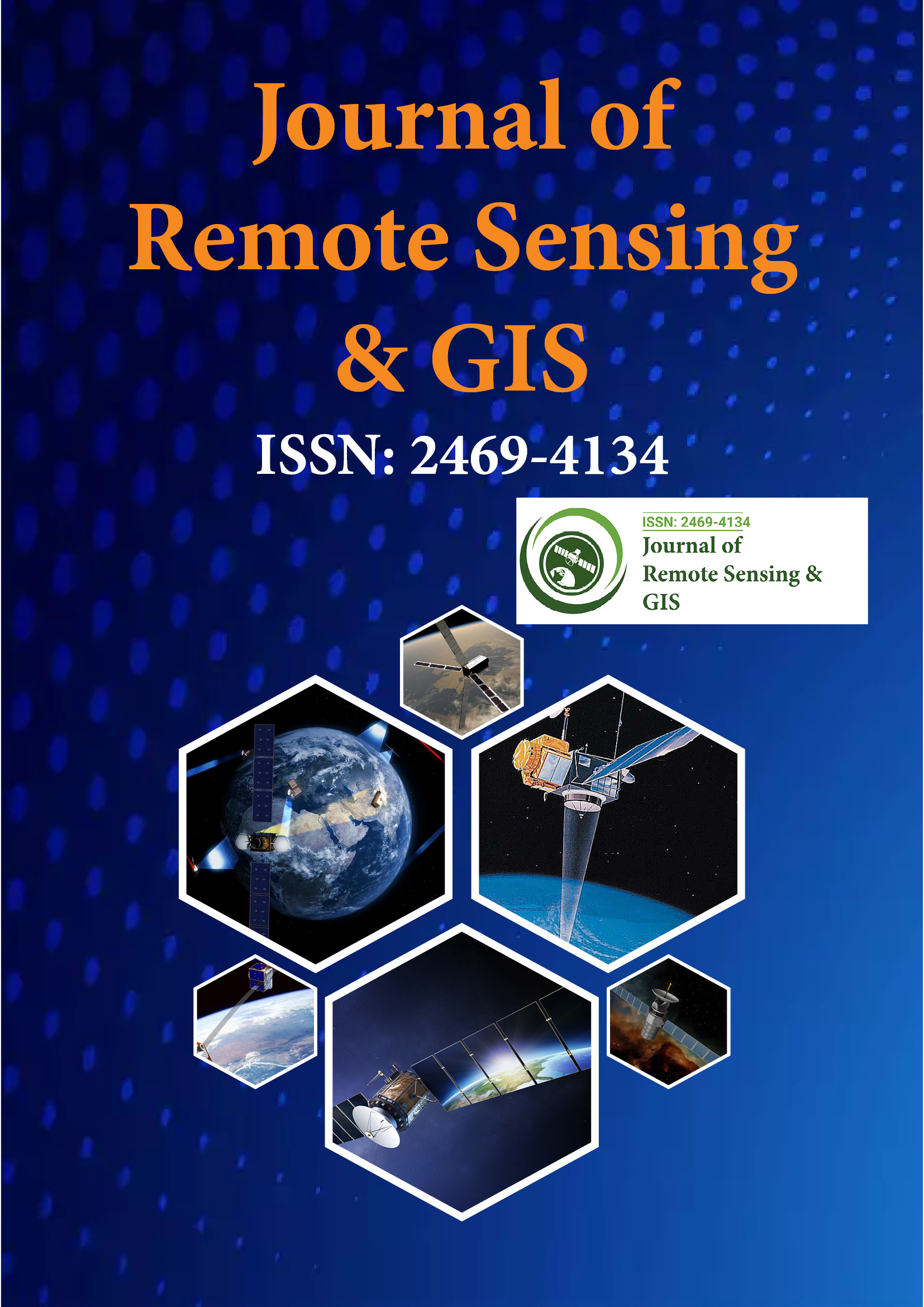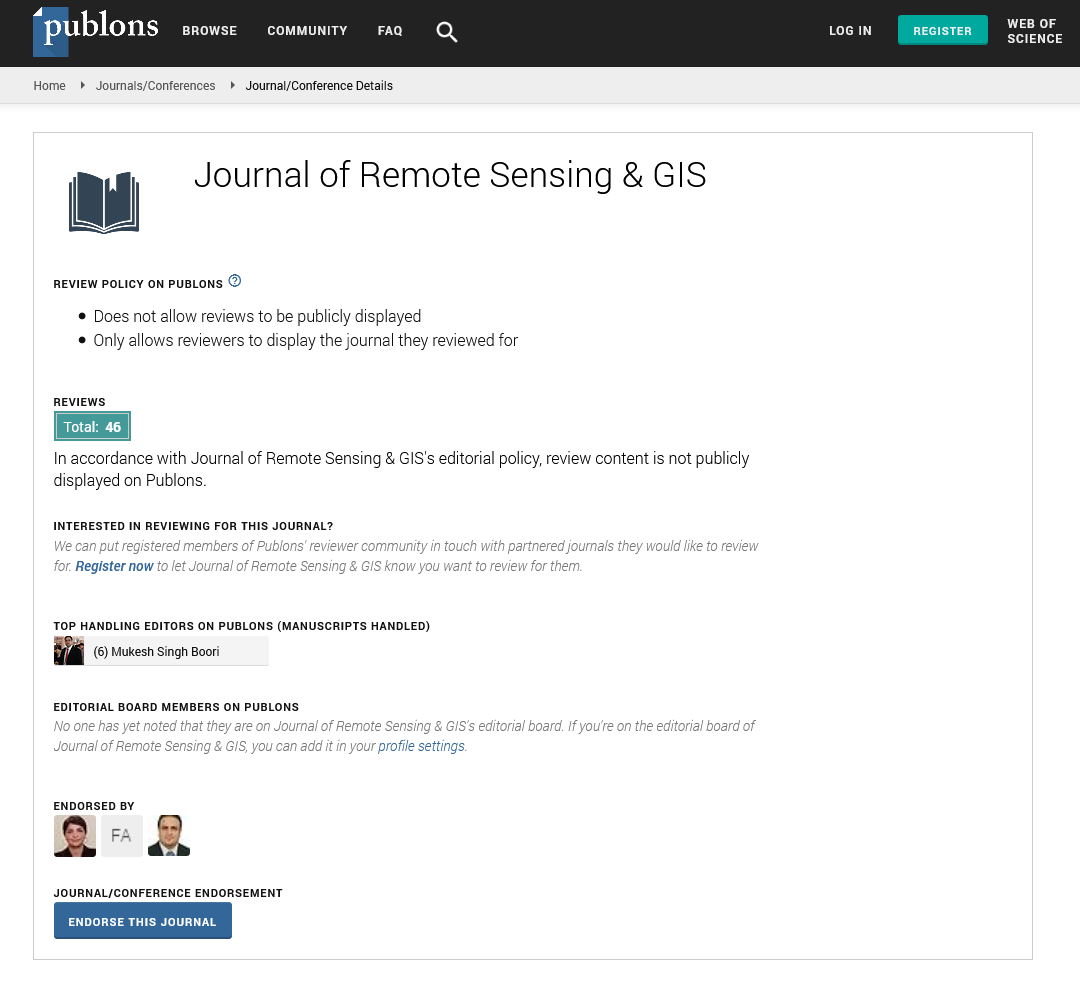Indexed In
- Open J Gate
- RefSeek
- Hamdard University
- EBSCO A-Z
- OCLC- WorldCat
- Publons
- International Scientific Indexing
- Euro Pub
- Google Scholar
Useful Links
Share This Page
Journal Flyer

Open Access Journals
- Agri and Aquaculture
- Biochemistry
- Bioinformatics & Systems Biology
- Business & Management
- Chemistry
- Clinical Sciences
- Engineering
- Food & Nutrition
- General Science
- Genetics & Molecular Biology
- Immunology & Microbiology
- Medical Sciences
- Neuroscience & Psychology
- Nursing & Health Care
- Pharmaceutical Sciences
Change detection in land use and land cover using remote sensing data and GIS
2nd International Conference on GIS and Remote Sensing
October 02-03, 2017 Vienna, Austria
Abdelkader El Garouani and David J Mulla
USMBA, Morocco
University of Minnesota, USA
Scientific Tracks Abstracts: J Remote Sensing & GIS
Abstract:
The environmental impacts of intense urban sprawl are the increase of impermeable surfaces, which increase the runoff volume and the urban problem in streambeds. The study area concerns Fez, which covers an area of 105 kmĀ². Remote sensing data (Landsat images and Google Earth), hydro-meteorological data, topographic maps, census data and field data were used to identify different patterns of land-use land-cover changes related to the growth of the city for the period 1984- 2013. In this research, we have analyzed the relationship between urbanization and land-use changes and their impact on cityscape in Fez and the importance of the increase in impervious surface areas. The HEC-GeoRAS model was used for flooding risk mapping. For land-use mapping we combined spring and summer images. In the summer image, the Fez urban area appears unvegetated and is distinguishable from forests and orchards. However, the spring image was needed to separate vegetated areas from urban areas with significant amounts of asphalt and concrete and other impervious surfaces that are spectrally similar to bare soil in a summer image. The importance of multi-temporal imagery was confirmed by determining the transformed divergences for the dataset (Two images in 1984 and two images in 2013). This approach has demonstrated how landscape changes can be derived from satellite imagery in the urban spatial structure. Interpretation of Fezā??s growth over a period of 29 years allows a deeper understanding of growth mechanisms, underlying drivers of urban expansion, and their effects on local livelihoods. The main direction of urban expansion in Fez was expansion and increased construction on the West and South of the city. The consistent and high impervious surface data provided the Landsat classification is critical to develop new flood management strategies for protection as well as for rehabilitation.
Biography :
Abdelkader El Garouani received a PhD degree in Earth Sciences from Sidi Mohamed Ibn Abdellah University, Fez with emphasis on Hydrology, GIS and Remote Sensing (2000). During 1996 to 2017, he rose from a position of Associate to Full Professor in the Environment Department at the Faculty of Sciences and Techniques, Fez. Since 2006, he has been the Head of a Research Team: Geomatics and Natural Resources at the Faculty of Sciences and Techniques. He and his co-authors (including 20 MS and PhD students) have produced over 100 scientific publications in professional journals and oral presentations in International Conferences (33 papers and 76 communications).

